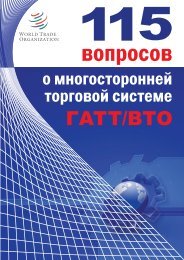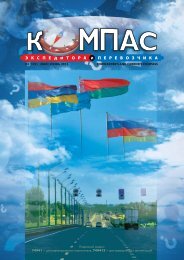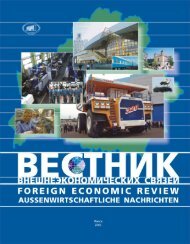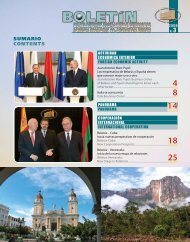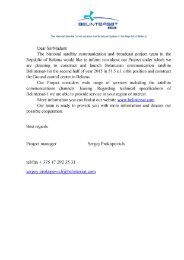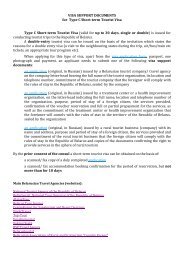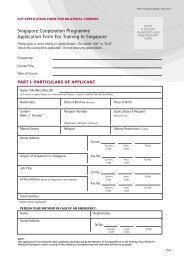Human Development Report 2013 - UNDP
Human Development Report 2013 - UNDP
Human Development Report 2013 - UNDP
Create successful ePaper yourself
Turn your PDF publications into a flip-book with our unique Google optimized e-Paper software.
BOX 2.4Mobile phones and the Palapa Ring: connecting IndonesiaIndonesia used telecommunications technology to connect its large clusterof far-flung islands and to open the country to the outside world in waysunimaginable a generation ago. This transformation was not spontaneous:it required extensive private and public investment and prescient policyguidance from the state-run information and communications technologycouncil, Dewan Teknologi Informasi dan Komunikasi Nasional (DETIKNAS).With a diverse population stretched across a vast archipelago of nearly athousand inhabited islands, Indonesia faced formidable obstacles in itstransition to the digital age. Communications between islands was limited.Landline telephones were few, available to most ordinary Indonesians onlyin major cities and at high cost.By 2010, however, 220 million mobile phones were registered in a countryof 240 million people. An estimated 85% of adults owned phones, asstate encouragement and market competition slashed the prices of handsetsand phone service alike. The number of Indonesian Internet users hasalso grown exponentially. As recently as 2008, just an estimated 13 millionhad regular Internet access. By late 2011, more than 55 million people did,according to industry surveys. The majority of young Indonesians in urbanareas now enjoy Internet access, mostly through mobile phones, but alsothrough the country’s 260,000 Internet cafes (warnets).Through DETIKNAS the government has made Internet access a nationalpriority, building what it calls a Palapa Ring of fibre-optic cables throughoutthe archipelago. It is closing in on its goal of wiring schools in a thousandremote rural villages with Internet service and has introduced e-budgetingand e-procurement systems for its own business operations. Perhaps moststriking is the explosion of social media. In July 2012, there were 7.4 millionregistered Facebook users in greater Jakarta alone—the second most ofany city in the world, after Bangkok’s 8.7 million. In all of Indonesia, therewere 44 million Facebook accounts—almost as many as India’s 49 million.Indonesia has become a country where cabinet ministers send daily tweetsto constituents. It has the third most Twitter subscribers in the world, andenvironmentalists use online databases and Google Earth mapping tools topublicize deforestation.The human development benefits of this digital revolution are apparent,Indonesian analysts say, with mobile phones giving rural communities accessto public health information, banking services and agricultural marketinformation. Civic engagement has benefited, with online public informationservices expanding since the 2010 passage of a far-ranging access to informationlaw. The economy is profiting too. A December 2011 study by DeloitteAccess Economics calculated that the Internet economy already accounts for1.6% of Indonesia’s GDP, greater than the value of natural gas exports andcomparable to the share in Brazil (1.5%) and the Russian Federation (1.6%),though still less than in China (2.6%) and India (3.2%). Deloitte projects anincrease to at least 2.5% of GDP in five years, a substantial contributor toIndonesia’s International Monetary Fund–predicted annual GDP growth rateof 6%–7% through 2016.Source: Karimuddin 2011; Deloitte 2011.trade, investment, finance and technologytransfer.A recent study of trends over 1988–2007finds positive growth spillovers from Chinato other developing countries, particularlyclose trading partners. 42 These benefits haveto some extent offset slackening demand fromdeveloped countries. Growth in low-incomecountries would have been an estimated0.3–1.1 percentage points lower in 2007–2010had growth fallen at the same rate in Chinaand India as in developed economies. 43 FDIfrom a single source country, China, was creditedwith contributing substantially to growthrates in several African countries, including in2008–2009 when other growth impulses weredissipating. Between 2003 and 2009, the estimatedcontribution to growth from Chinese FDIranged from 0.04 percentage point in SouthAfrica to 1.9 percentage points in Zambia. Thecontribution was also high in the DemocraticRepublic of the Congo (1.0 percentage point),Nigeria (0.9), Madagascar (0.5), Niger (0.5)and Sudan (0.3). 44Commodity producers in Sub-SaharanAfrica and elsewhere have benefited from aprolonged commodity boom arising in Eastand South Asia. Cheap imports also increasethe purchasing power of low-income consumersand the competitiveness of exportorientedproducers. Some African countriesmay, however, be hampered by the enclavecharacter of extractive industries, which reducesthe potential gains from South–Southtrade and exposes economies to the risk ofDutch disease. Nevertheless, the primarysector can generate sizeable backward andforward links, as Brazil, Chile, Indonesia,Malaysia, and Trinidad and Tobago haveshown. Possibilities include agroindustry andlogistics infrastructure, as well as demand forservices (in food processing and distribution,construction, repair and maintenance), all ofwhich create jobs, income and learning andcan enable entrepreneurs to begin new cyclesof innovation and investment.Several encouraging signs are evident.The more recent investments from East andChapter 2 A more global South | 51




